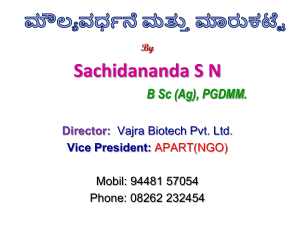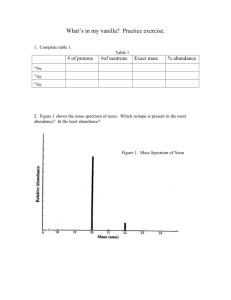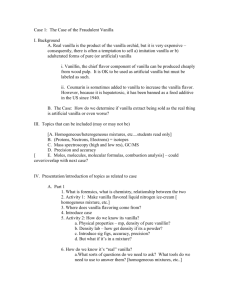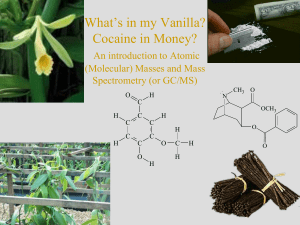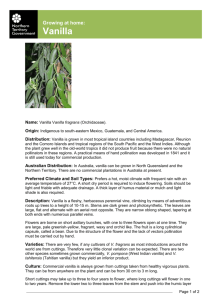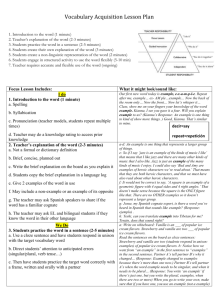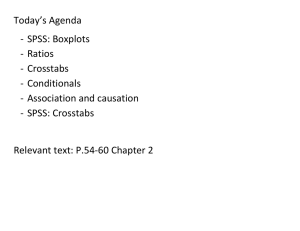Caffeine Extraction from Coffee
advertisement
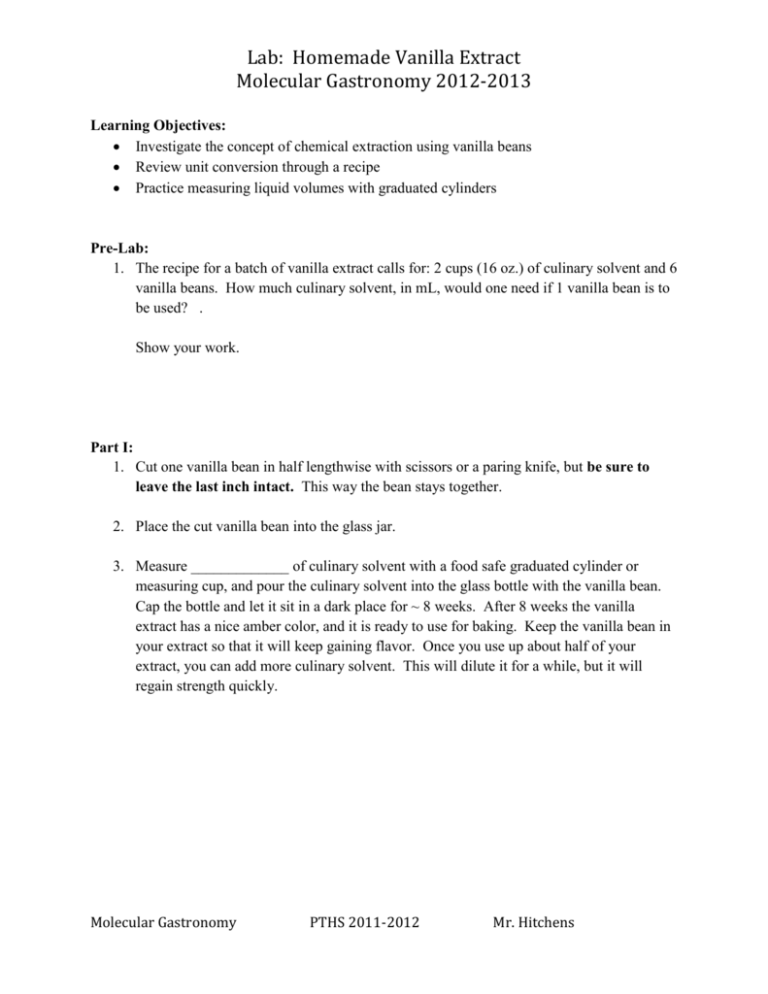
Lab: Homemade Vanilla Extract Molecular Gastronomy 2012-2013 Learning Objectives: Investigate the concept of chemical extraction using vanilla beans Review unit conversion through a recipe Practice measuring liquid volumes with graduated cylinders Pre-Lab: 1. The recipe for a batch of vanilla extract calls for: 2 cups (16 oz.) of culinary solvent and 6 vanilla beans. How much culinary solvent, in mL, would one need if 1 vanilla bean is to be used? . Show your work. Part I: 1. Cut one vanilla bean in half lengthwise with scissors or a paring knife, but be sure to leave the last inch intact. This way the bean stays together. 2. Place the cut vanilla bean into the glass jar. 3. Measure _____________ of culinary solvent with a food safe graduated cylinder or measuring cup, and pour the culinary solvent into the glass bottle with the vanilla bean. Cap the bottle and let it sit in a dark place for ~ 8 weeks. After 8 weeks the vanilla extract has a nice amber color, and it is ready to use for baking. Keep the vanilla bean in your extract so that it will keep gaining flavor. Once you use up about half of your extract, you can add more culinary solvent. This will dilute it for a while, but it will regain strength quickly. Molecular Gastronomy PTHS 2011-2012 Mr. Hitchens Lab: Homemade Vanilla Extract Molecular Gastronomy 2012-2013 Lab Report: Title, Objective, Materials, Procedure 1. Pre-Lab: Labeled and explained. 2. Data Table: Use the internet to find the structure of vanillin. Draw the structure below. Also, report vanillin’s room temperature appearance, its melting point, its boiling point, its molar mass, its solubility in ethanol. 3. Post-Lab: Convert the solubility of vanillin in ethanol that you found for pre-lab to units of g / mL. If the solubility of vanillin in water is 1 g / 100 mL, is vanillin more soluble in ethanol than in water, or less soluble? How much more/less soluble? Show your calculations and comparisons. Molecular Gastronomy PTHS 2011-2012 Mr. Hitchens
